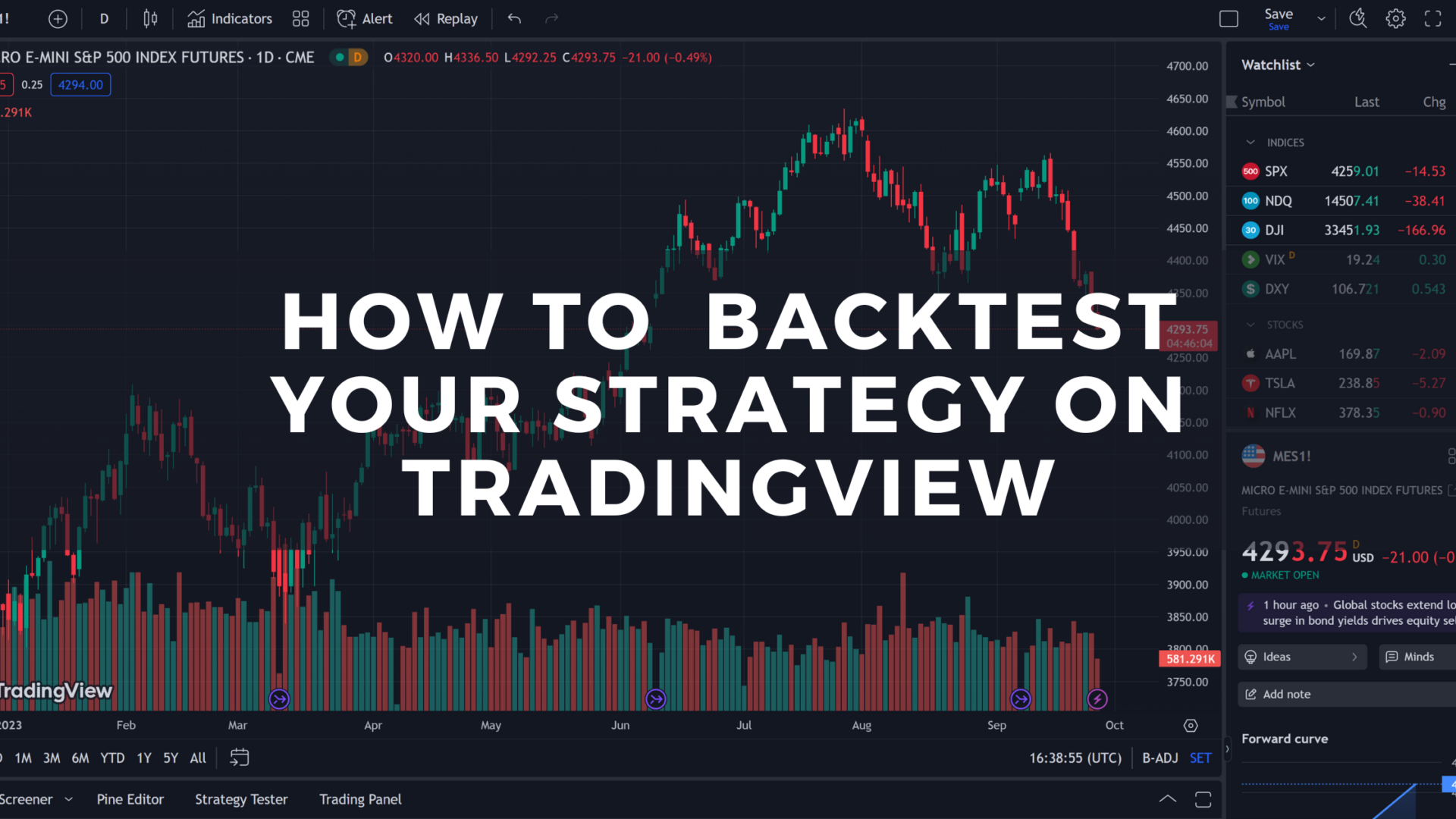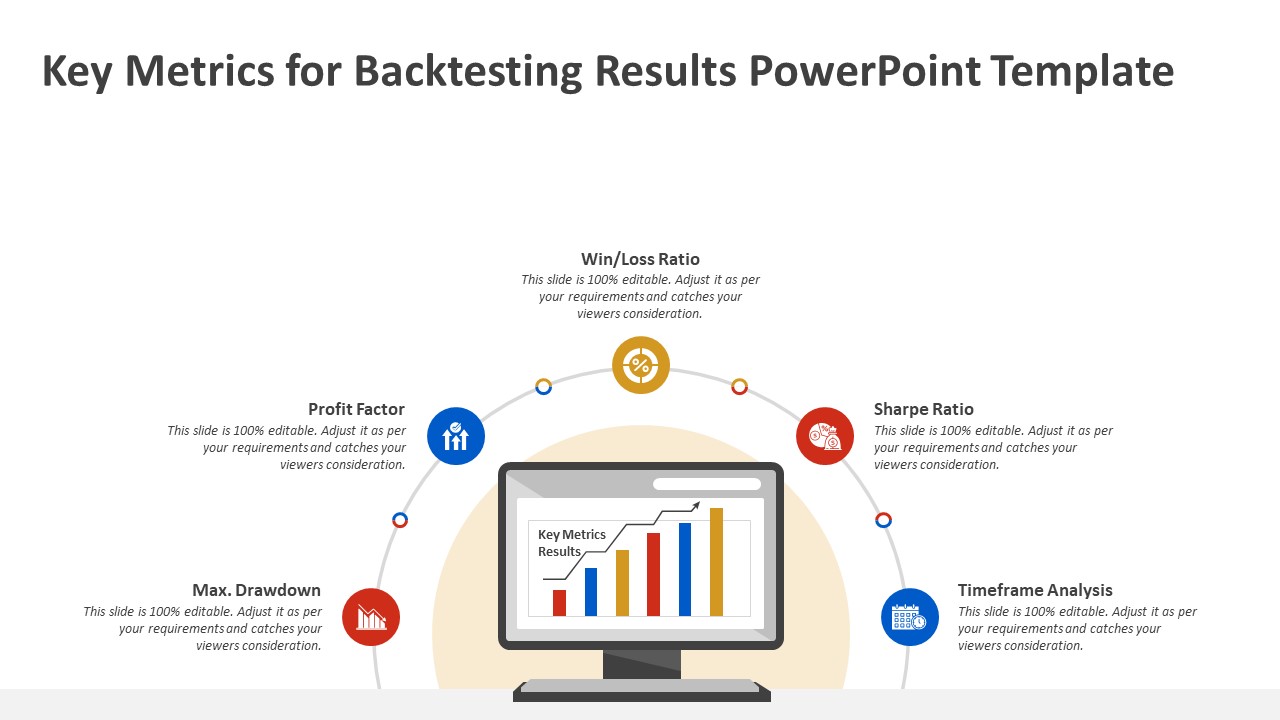Did you know that the odds of flipping a coin and getting heads ten times in a row are about 1 in 1,024? Just like that, day trading can feel like a gamble without the right strategies! In this article, we dive into the essentials of day trading backtesting—what it is, how it works, and why it’s crucial for improving your trading performance. You'll learn about the benefits of backtesting, the tools you need, and the data required for effective analysis. We’ll also cover common pitfalls, how to interpret your results, and the importance of regularly updating your strategies. With insights from DayTradingBusiness, you’ll be equipped to enhance your trading game and make more informed decisions. Let's get started!
What is Day Trading Backtesting?
Day trading backtesting is the process of evaluating a trading strategy by applying it to historical market data to assess its effectiveness. It allows traders to see how a strategy would have performed in the past, helping them identify potential profitability and risks. This is crucial because it provides insights into the strategy's viability before real capital is put at risk, leading to more informed trading decisions.
How Does Day Trading Backtesting Work?
Day trading backtesting involves testing a trading strategy using historical market data to evaluate its effectiveness. Traders simulate trades based on past price movements, identifying potential profits and losses without risking real money.
To backtest, you select a strategy, gather historical price data, and apply the strategy to the data to see how it would have performed. This process helps traders fine-tune their strategies, understand risk, and optimize entry and exit points. It’s crucial because it provides insights into potential success and helps build confidence before live trading.
Why is Backtesting Important for Day Traders?
Backtesting is crucial for day traders because it allows them to evaluate trading strategies using historical data. This process helps identify the effectiveness of a strategy, assess its risk, and refine techniques before risking real capital. By simulating trades, traders can see how their strategies would have performed in different market conditions, providing insights into potential profitability and consistency. Ultimately, backtesting enhances decision-making and builds confidence in trading strategies.
What Are the Benefits of Day Trading Backtesting?
Day trading backtesting allows traders to evaluate trading strategies using historical data, helping identify which strategies would have been profitable. Benefits include:
1. Performance Validation: Confirms if a strategy works before risking real money.
2. Risk Management: Helps assess potential losses and set stop-loss levels.
3. Refinement: Allows for tweaking strategies based on past performance.
4. Confidence Building: Increases trader confidence through proven results.
5. Market Insight: Provides understanding of market conditions and patterns.
Overall, day trading backtesting is crucial for developing effective trading strategies and minimizing risks.
How Can I Start Backtesting My Day Trading Strategies?
To start backtesting your day trading strategies, follow these steps:
1. Choose a Trading Platform: Select a platform that supports backtesting, like TradingView or MetaTrader.
2. Define Your Strategy: Clearly your entry and exit criteria, risk management rules, and timeframes.
3. Collect Historical Data: Obtain historical price data relevant to your strategy. This can often be downloaded from your trading platform.
4. Use Backtesting Software: Input your strategy into the backtesting tool, utilizing the historical data to simulate trades.
5. Analyze Results: Review metrics such as win rate, average profit/loss, and drawdowns to evaluate performance.
6. Refine Your Strategy: Adjust your strategy based on the backtest results, and repeat the process as needed.
Backtesting is crucial because it helps you identify the viability of your trading strategy without risking real money.
What Tools Are Available for Day Trading Backtesting?

Day trading backtesting involves evaluating trading strategies using historical data to determine their potential effectiveness. Key tools for day trading backtesting include:
1. TradingView: Offers robust charting tools and backtesting capabilities with Pine Script.
2. MetaTrader 4/5: Popular platforms for Forex and stock trading that include built-in backtesting features.
3. NinjaTrader: Provides advanced backtesting and simulation tools for futures and stocks.
4. QuantConnect: A cloud-based platform for algorithmic trading with extensive backtesting capabilities.
5. Amibroker: A comprehensive tool for backtesting and technical analysis in stocks and ETFs.
6. Thinkorswim by TD Ameritrade: Includes paper trading and backtesting functionalities for strategy evaluation.
These tools allow traders to refine strategies, identify potential pitfalls, and improve decision-making before committing real capital.
What Data Do I Need for Effective Backtesting?
For effective day trading backtesting, you need historical price data, including open, high, low, and close prices. Additionally, volume data is crucial to analyze trading activity. You'll also want to incorporate transaction costs, such as commissions and slippage, to simulate real trading conditions accurately. Finally, consider using fundamental data or indicators that align with your trading strategy for comprehensive analysis.
How Do I Interpret Backtesting Results in Day Trading?
To interpret backtesting results in day trading, focus on key metrics:
1. Win Rate: Percentage of profitable trades. A higher win rate indicates a more successful strategy.
2. Risk-Reward Ratio: Compare potential profit to potential loss. Ideally, aim for a ratio above 1:2.
3. Maximum Drawdown: The largest drop from peak to trough. Lower drawdowns suggest better risk management.
4. Sharpe Ratio: Measures risk-adjusted return. A ratio above 1 indicates good performance relative to risk.
5. Consistency: Analyze results over different market conditions to ensure robustness.
Evaluate these metrics together for a comprehensive view of your strategy's effectiveness.
What Common Mistakes Should I Avoid in Backtesting?
Avoid these common mistakes in backtesting:
1. Overfitting: Tailoring your strategy too closely to historical data can lead to poor real-world performance.
2. Ignoring Market Conditions: Not accounting for different market environments can skew results.
3. Inadequate Sample Size: Testing on too few trades can produce unreliable outcomes.
4. Disregarding Transaction Costs: Failing to include commissions and slippage can lead to overly optimistic results.
5. Using Lookahead Bias: Incorporating future information into your strategy during testing will give false signals.
6. Neglecting Risk Management: Not incorporating stop losses or position sizing can misrepresent potential losses.
7. Static Assumptions: Assuming market conditions and behavior will remain constant ignores evolving dynamics.
By avoiding these pitfalls, you ensure your day trading backtesting is more effective and realistic.
How Can Backtesting Improve My Day Trading Performance?

Backtesting allows you to test your trading strategies against historical data to see how they would have performed. This process identifies strengths and weaknesses in your approach, helping you refine your strategy before risking real money. It boosts confidence by providing evidence of potential success and helps in risk management by revealing how much drawdown you might expect. Ultimately, backtesting increases your chances of consistent profitability in day trading by ensuring your strategies are based on data rather than guesswork.
Learn about How to Use Backtesting to Improve Your Day Trading Performance
Is Historical Data Reliable for Day Trading Backtesting?
Yes, historical data can be reliable for day trading backtesting, but it depends on the quality and accuracy of the data. High-quality data reflects real market conditions, while poor data can lead to misleading results. It's crucial to consider factors like market changes, liquidity, and slippage when interpreting backtesting results. Using diverse timeframes and multiple data sources can enhance reliability. Always validate your strategy with forward testing.
Learn about How to Analyze Historical Data Using Day Trading Charts
How Often Should I Update My Backtesting Strategies?
You should update your backtesting strategies regularly, ideally every few months or after significant market changes. This ensures your strategies remain effective and relevant. Frequent updates help adapt to evolving market conditions and improve overall performance.
What Are the Limitations of Day Trading Backtesting?
Day trading backtesting has several limitations:
1. Historical Data Dependence: Results depend on the quality and accuracy of historical data. Inaccurate data can lead to misleading conclusions.
2. Market Changes: Market conditions evolve. Strategies that worked in the past may not perform well in the future due to changes in volatility, liquidity, or regulations.
3. Overfitting: Traders may create overly complex strategies tailored to past data, which can fail in real-time trading.
4. Execution Issues: Backtesting doesn't account for slippage, commissions, and market impact that occur during live trading.
5. Psychological Factors: Backtesting ignores the trader's emotional and psychological responses to real-time market fluctuations, which can affect decision-making.
6. Time Constraints: Backtests often assume instant execution, disregarding the reality of time delays in live trading.
These factors can significantly affect the reliability of backtesting results in day trading.
Can Backtesting Guarantee Success in Day Trading?
No, backtesting cannot guarantee success in day trading. While it helps evaluate trading strategies using historical data, it doesn't account for future market conditions or unexpected events. Successful day trading relies on adaptability, risk management, and continuous strategy refinement beyond just backtesting results.
How Do I Choose the Right Time Frame for Backtesting?
To choose the right time frame for backtesting in day trading, consider your trading strategy and goals. If you’re focusing on intraday trades, use shorter time frames like 1-minute or 5-minute charts. For swing trading strategies, daily or hourly charts may be more appropriate.
Analyze historical data for your chosen time frame to ensure it reflects market conditions accurately. Also, consider your availability for trading; if you can only trade during specific hours, align your backtesting time frame with that schedule. Finally, test different time frames to see how they impact your strategy's performance.
What Metrics Should I Analyze in Backtesting Results?

Analyze these key metrics in backtesting results:
1. Net Profit: Total profit after all losses.
2. Win Rate: Percentage of profitable trades.
3. Risk-Reward Ratio: Average profit per trade divided by average loss.
4. Maximum Drawdown: Largest peak-to-valley decline during the period.
5. Sharpe Ratio: Return per unit of risk, measuring risk-adjusted performance.
6. Trade Frequency: Number of trades executed over the backtesting period.
7. Average Trade Duration: Time each trade remains open.
These metrics provide insight into strategy performance and risk management.
Conclusion about What is Day Trading Backtesting and Why is it Important?
In conclusion, day trading backtesting is a vital process that equips traders with the insights needed to refine their strategies and enhance performance. By analyzing historical data, traders can identify strengths and weaknesses in their approaches, ultimately leading to more informed decision-making. While backtesting cannot guarantee success, it significantly increases the likelihood of achieving consistent results. To optimize your trading strategies, utilize the tools and metrics discussed, and stay mindful of common pitfalls. For comprehensive support in your trading journey, consider leveraging the resources offered by DayTradingBusiness.
Learn about Frequently Asked Questions About Day Trading Backtesting